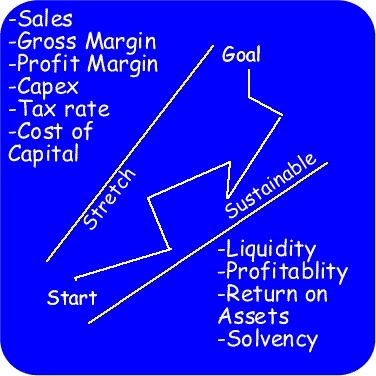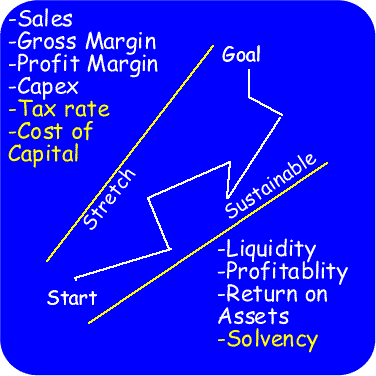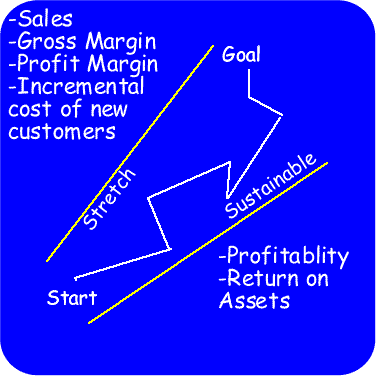Corporate financials

Strategic planning teams need to understand the corporate issues to put their task in perspective.
On the stretch side, let's refine CAPEX: what is the incremental cost of CAPital EXpenditures, either working capital (inventory, accounts payable and accounts receivable) or infrastructure for new customers or for new products.
On the sustainability side, let's worry about going out or business: what is the risk of bankruptcy. Professor Edward I. Altman at NYU developed a bankruptcy indicator called "Altman's Z" to provide advance warning (links to read more): solvency, profitability, return on assets and solvency.
Restated: as you do business can you pay your bills; make enough profit to put some away; efficiently use your assets; and do you assets have enough value to cover your debts -- will folks lend you money again?
Business unit financials
 If the business unit is very independent, the numbers to track for strategy formulation are the same as for the corporation as a whole. If the business unit is very independent, the numbers to track for strategy formulation are the same as for the corporation as a whole.
If the business unit is not independent, some numbers will come from corporate headquarters, e.g., tax rates, cost of capital, solvency.
Here, the strategic planning team needs to understand their value to the corporation as a whole as well as to industry averages and to their competitors. They should compare their numbers to other business units -- how much does the business unit contribute to the key margins.
Key measures: sales, gross margin, net profit margin, Capex (for your unit), liquidity (accounts payable and receiveable) and return on assets.
Department financials
 How much do each of the Departments contribute to the business's success, as a primary activity in the value chain or as a support activity. How much do each of the Departments contribute to the business's success, as a primary activity in the value chain or as a support activity.
Support activities have a hard case to make. Sam Walton's rule was support activities, the corporate bureaucracy, should not cost more than 2% of sales. How are you doing?
Here you express your departments role as a percent of sales. It may be by employee, or square foot per store, geographic region, etc.
What do you contribute to gross and the net profit margin?
As the company grows, what is your incremental costs per customer, product, etc.
 Comparing financials Comparing financials |
Who Does the Research?  |
|